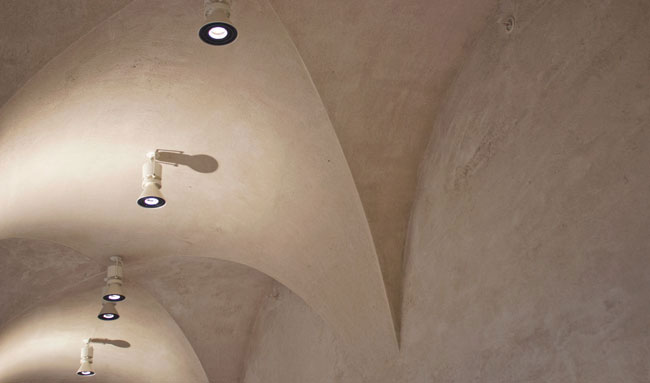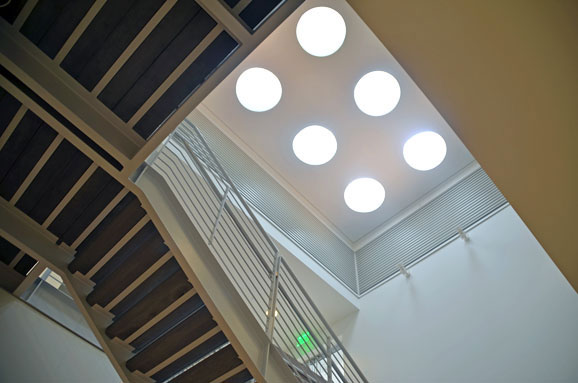New technologies and innovation have been at the heart of the Harvard Art Museums’ renovation and expansion project—even when it comes to switching off a light. When the museums open this November, the new lighting system will operate on a digital platform, allowing staff to control hundreds of lights just by touching a screen.
Turning a few lights off at home or at work may result in minimal energy or cost savings. But in the aggregate—particularly in a 204,000-square-foot building—conserving lighting energy can have big results. “There’s a lot of scale to consider here,” said Jim Moisson, facilities manager at the museums. “It’s a real win in a lot of ways.”
The lighting control system has a built-in astronomical clock that can respond to sunrise and sunset, timing the use of lights with precision. In addition, some of the museums’ conservation laboratories have “daylighting” programs, which sense the amount of natural daylight available in the space. “If there’s sufficient natural daylight coming in, the lights won’t go on,” Moisson said. The lighting system works in tandem with the museums’ elaborate system of shades that carefully control the amount of natural light entering the facility.
Such efforts have already resulted in savings for the museums. Just this month, the museums received a second rebate check from the utility company, for example. Moisson anticipates that this programmable system of lighting control, along with the museum-grade LED lights—which use less energy, create less heat, and last longer—will keep electricity costs down as compared to a conventional lighting system. This is simply one part of our effort to improve energy use in the museum setting.





